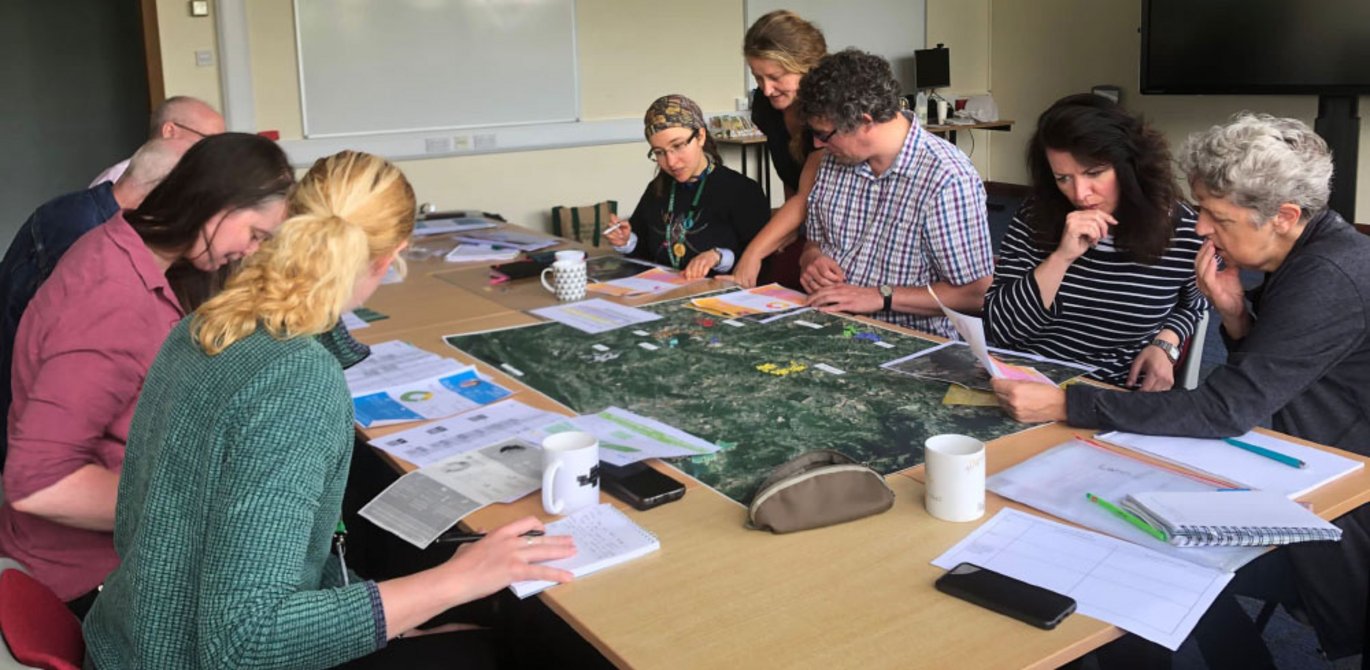The game “Dynamix” allows farmers to design and evaluate crop-livestock integration scenarios among farms
Crop-livestock collaborations beyond farm level are recognized as promising options to achieve reduced environmental impacts through integrated crop-livestock systems in relation to circularity in inputs, while overpassing the potential work limit constraints at the farm level. However, establishing exchanges among farms can be rather complex in terms of logistics and collective organization. Co-design could be a relevant option to build scenarios with farmers considering their practices and context.

“Co-design” or “participatory design” means a design that attempts to actively involve all stakeholders in the design process to ensure the result meets their needs and is usable.
In the MIXED project the participative approach is to be undertaken with small local groups of crop and livestock farmers. In each group there should be between 5 and 15 farmers. The methodology developed in MIXED is inspired by Moraine et al. (2017), who developed the first adaptive methodology to co-design scenarios of crop-livestock integration beyond farm level, e.g. selling grain and fodder within collectives of neighbouring farmers. This method was a first step to support the design of sustainable collective crop-livestock systems, considering both the technical specific constraints of agroecosystems and the objectives of farmers. The method was based on five steps that are inspired by Börjeson et al.'s (2006) guidelines for designing future-oriented scenarios (see figure 1).
A six-step participative methodology - including the Dynamix game
The five step method by Börjeson et al. allowed to identify the potential for new crop-livestock interactions between farms and to quantify the potential fluxes between farms through a collective need-offer balance but did not represent explicitly the fluxes on a map. MIXED worked in accordance with this approach but improved it to co-design spatially-explicit crop-livestock integration scenarios between farms, while considering further the logistical aspects (e.g. storage and transportation). A step 3 was adapted though the creation of Dynamix game allowing to co-design technical and logistical scenarios on a map of the collective and added a sixth step to address the implementation of changes.
The new (mixed) model
- Problem definition: A farmer focus group meeting is held to define the problem situation and to test potential scenarios
- Farmers motivation and initial assessment: Individual farmers are interviewed to gather their motivations, resources and their technical and economic farm data
- Co-design of scenarios (The Dynamix game): A co-design meeting is organized with the group of farmers using the serious game Dynamix, which combines a spatially explicit board game and a system model. The game allows the farmers to design and evaluate crop-livestock integration scenarios among farms.
- Multi-criteria evaluation of the scenarios: Is undertaken at the individual farm and at the group level.
- Participative evaluation of the scenarios: The results of the evaluation are discussed collectively at a second collective meeting and a scenario is selected.
- Implementation: The scenario implementation is implemented in real life and monitored
The Dynamix game prototype
The MIXED project has developed a prototype of the landscape level participatory game, called Dynamix, to help farmers develop crop-livestock integration scenarios farms in the selected networks. A major strength of the Dynamix tool is that it provides a standardized method to co-design crop-livestock integration beyond farm level and is easily applicable to other case-studies.
> Learn more about the development of the Dynamix prototype
Case studies
The serious game “Dynamix” has been developed and tested with two groups of French farmers including crop-livestock farmers and specialised crop or livestock farmers and then scaled-out to three other MIXED landscape case studies in Denmark, Scotland and the Netherlands.
The game was quite easily adapted to other contexts for crop-livestock integration beyond the individual farm level; including cattle grazing cover crops in Scotland, parcel exchange between potato farmers and dairy farmers in the Netherlands and landscape connectivity through hedges in Denmark.
The main adaptations for the case studies included trees and tree undercover, vegetables and especially potatoes, animal transportation and winter cereal grazing in the Dynamix serious game. The board game and model adaptation were not time-demanding as the tool was already planned to be adaptable to other soil-climatic and market contexts.
Challenges
The most challenging aspect of implementing the Dynamix serious game has been to align the process with at the right stage of the participative reflections taking part within the MIXED networks. The interest of implementing the Dynamix tool in the three case-studies selected was not only depending on farm data availability and context specificities but also on interactions with researchers, advisers and farmers within each network. For each network considered, a strong effort was made in understanding the case study, compiling the information already in the field workshops reports. Discussing scenarios and relevant indicators with the network leaders ahead was a key part of the process.
